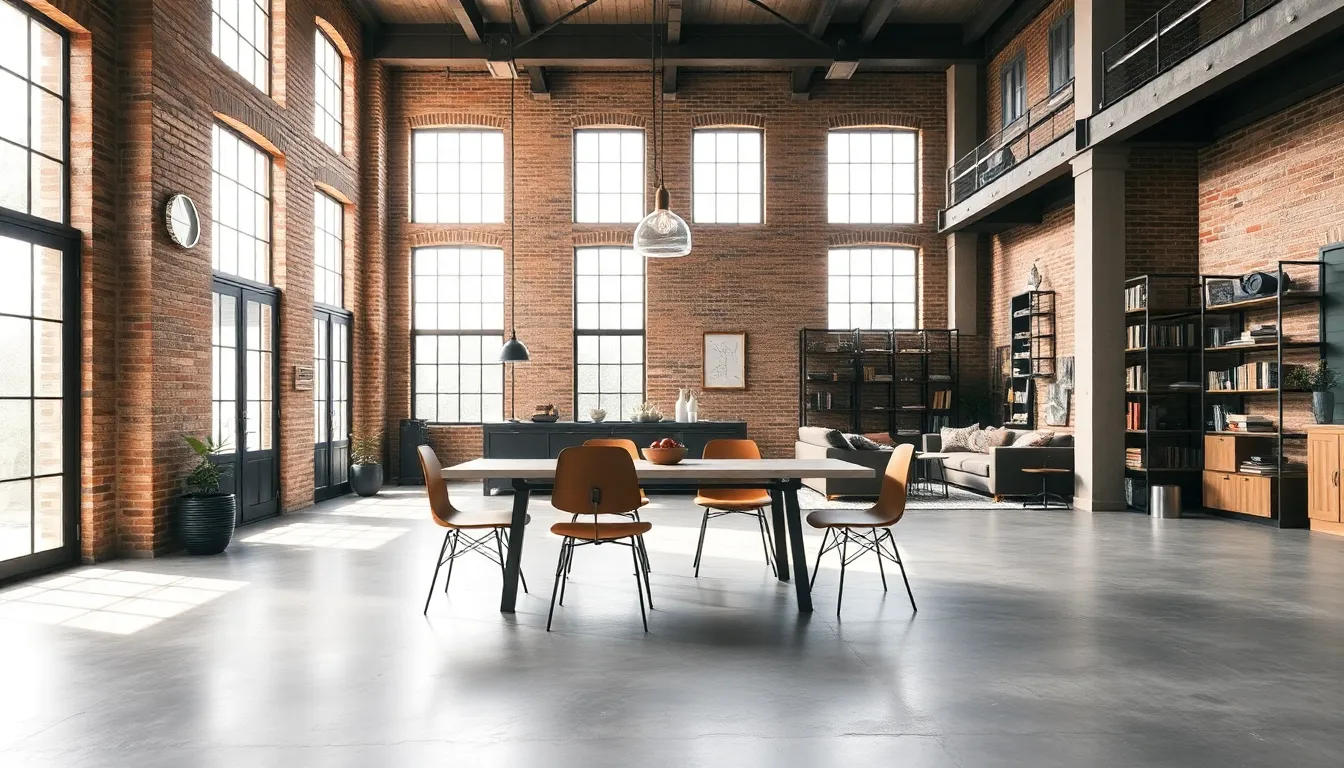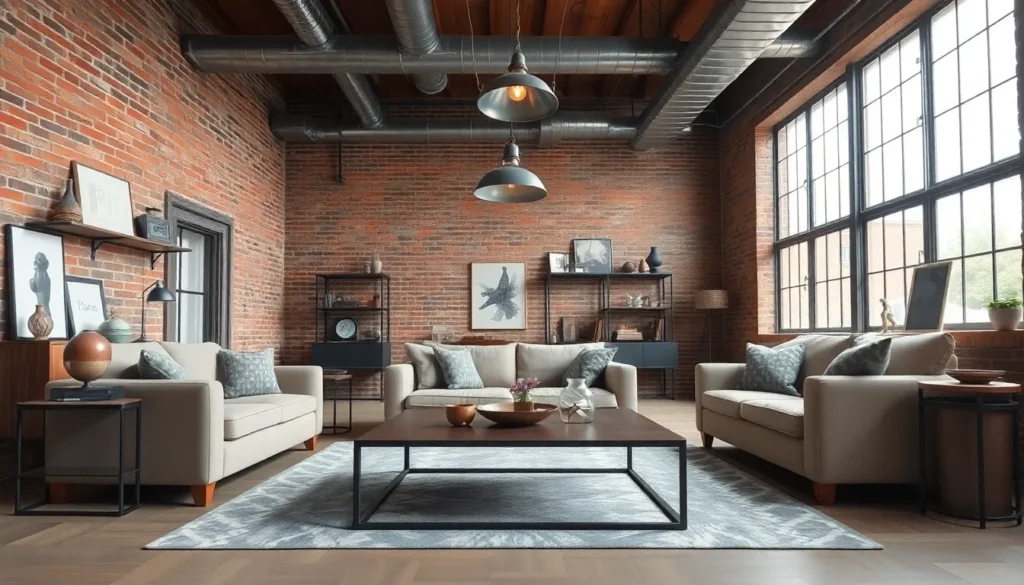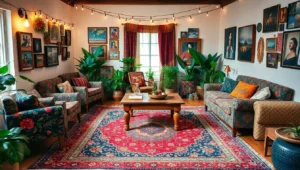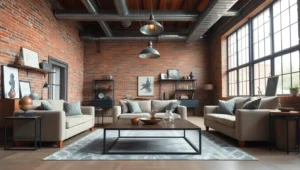Ever walked into a space that felt like it could tell stories? That’s the industrial style for you. Imagine exposed brick, sleek metal fixtures, and an overall vibe of urban sophistication. But don’t worry, your home doesn’t need to be an old factory to embody this aesthetic. In this guide, we’ll explore the ins and outs of creating an industrial-style home that’ll have your guests whispering ‘wow’ as soon as they step in. Ready to unleash your inner designer? Let’s immerse.
Table of Contents
ToggleUnderstanding Industrial Style Design

Industrial style design roots itself in the chic aesthetic of warehouses and factories. Originally, this style emerged in the 20th century when artists began converting abandoned industrial spaces into living areas. This look isn’t just about nostalgia: it embraces raw, unfinished elements and a certain rugged charm that many homeowners find appealing.
At its core, industrial design thrives on minimalism, where less truly is more. Think wide open spaces with high ceilings, minimal partitions, and a layout that invites flow rather than constriction. This design style tells a story of craftsmanship, where the wear and tear of materials become part of the room’s narrative.
Key Characteristics of Industrial Style Homes
Recognizing the unique traits can help anyone determine if an industrial aesthetic suits their taste. Here are some foundational characteristics:
- Exposed Structures: The heart of industrial style lies in its raw, authentic appeal. Exposed beams, ductwork, and pipes create a sense of honesty, as if the house is nothing more than its functional self.
- Raw Materials: Generally, it embraces concrete, metal, and brick. These materials not only provide strength but also contribute texture and depth to the overall design.
- Large Windows: Typically, industrial homes flaunt expansive windows that allow ample natural light to pour in, creating a bright and airy environment.
- Open Spaces: The layout often features a flowy open concept that eliminates walls and barriers, promoting a communal atmosphere.
These elements combined give spaces a robust and unfinished charm, carving out a unique identity that resonates warmth through its ruggedness.
Choosing the Right Color Palette
Settling on a color palette is essential in crafting your industrial-style sanctuary. Start with neutral shades which lay the groundwork for an understated yet effective backdrop. Here’s a quick guide on how to strike that perfect balance:
- Greys and Whites: These hues offer a timeless look that complements the raw materials found in industrial spaces.
- Dusty Tones: Shades like muted blues, greens, and browns add a subtle warmth while ensuring the atmosphere stays inviting.
- Accent Colors: Add personality with bold, striking colors like deep reds or oranges to energize your space without overpowering it.
Layering shades in different textures not only adds depth but keeps your design visually engaging while adhering to that industrial charm.
Incorporating Industrial Elements in Your Home
Bringing the eclectic allure of industrial style into your home doesn’t have to be daunting. It can be as simple as infusing striking elements into existing spaces. Consider these practical tips:
- Highlight Original Features: Retain existing structural elements of your home, like exposed bricks or beams. If renovations are on the table, opting for materials that replicate these characteristics can integrate seamlessly.
- Use Metals: Incorporate metals through furniture, fixtures, and décor. Think steel frames, aluminum accents, or even cast-iron pieces that enhance that industrial flair.
- Use Open Shelving: Rather than cloaking your possessions behind solid cabinetry, open shelving highlights a raw aesthetic while making everything accessible.
These choices create an intriguing interplay of new and old, further emphasizing the industrial theme.
Furnishing Your Industrial-Style Space
Selecting the right furnishings is fundamental, as they act as the backbone for your design. Here are some ideas to help in curating an inviting industrial space:
- Vintage Finds: Salvaged furniture and accessories provide character, imbibing a sense of history that fits perfectly within this design style.
- Neutral Upholstery: Sofas and chairs in muted colors like grey, beige, or brown serve as excellent canvases, contrasting beautifully with the bold elements of the room.
- Unique Table Options: Look for tables with a mix of materials, think wooden tops with metal legs. It draws attention without losing sight of the industrial essence.
By blending varied materials and styles, the right furniture will tie the entire look together, making it both functional and visually appealing.
Lighting Essentials for Industrial Interiors
Proper lighting plays a pivotal role in enhancing industrial design. Here’s how to illuminate your space effectively:
- Pendant Lights: Choose metal or concrete pendant lights hung at varying heights to create an eye-catching visual focal point.
- Floor and Table Lamps: Look for fixtures that exhibit a raw or factory feel. A riveted base or a vintage finish can serve as attractive accents.
- Large Windows: Don’t forget the power of natural light. Maximizing window space not only brightens the room but beautifully highlights the industrial features.
With a keen eye on lighting, the overall design can leap from bland to breathtaking, emphasizing the home’s architectural integrity.





